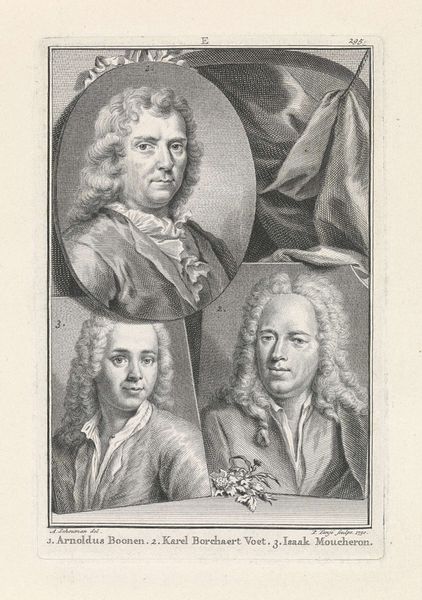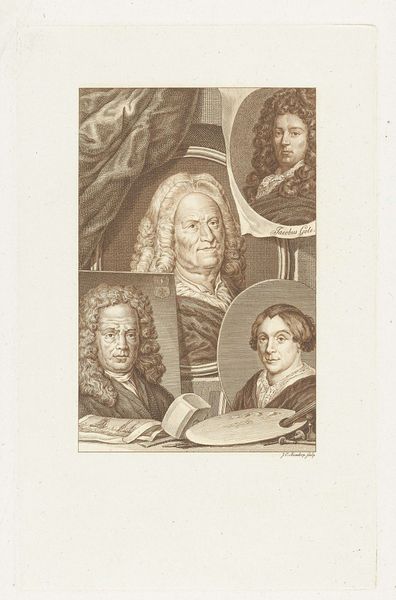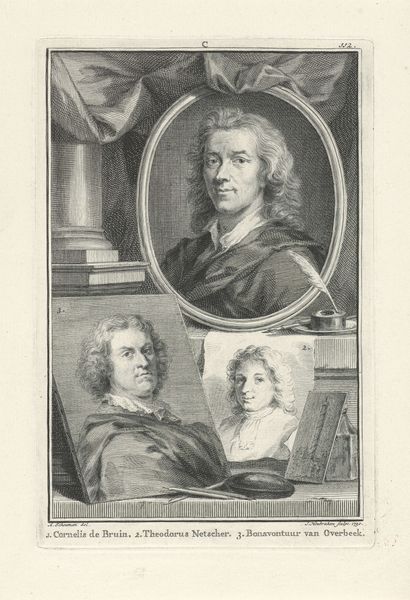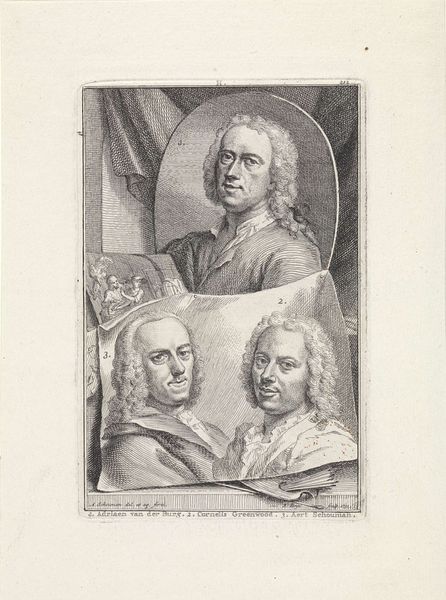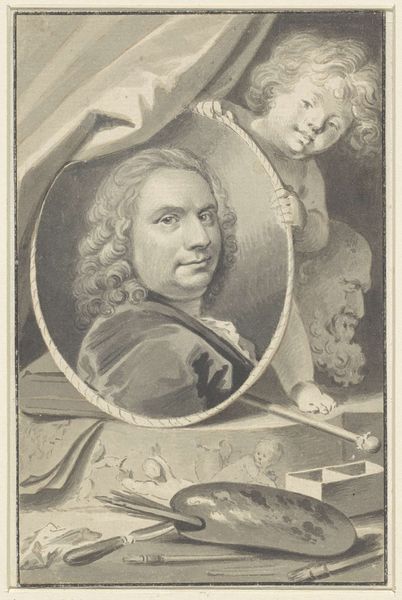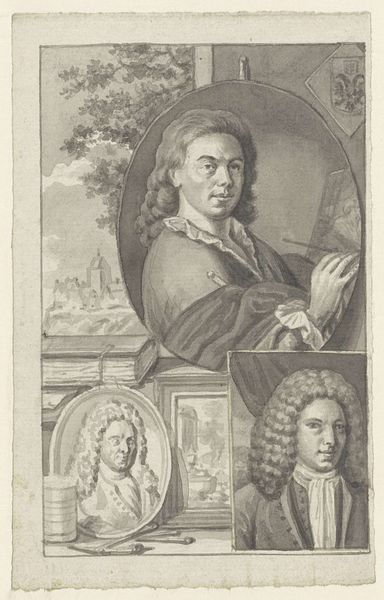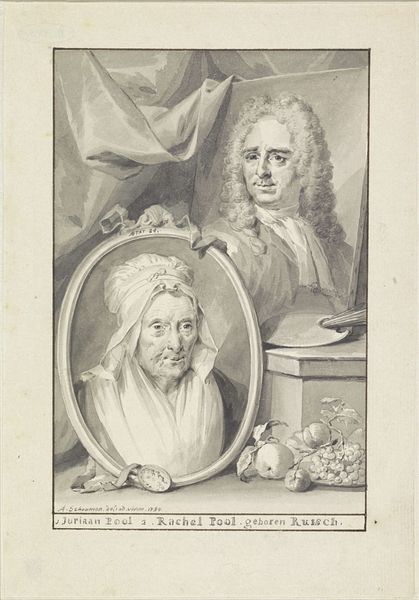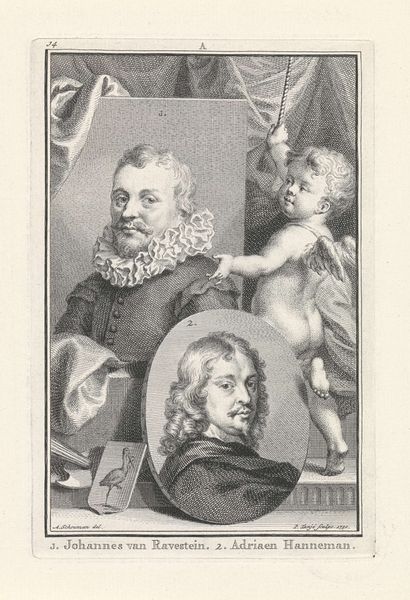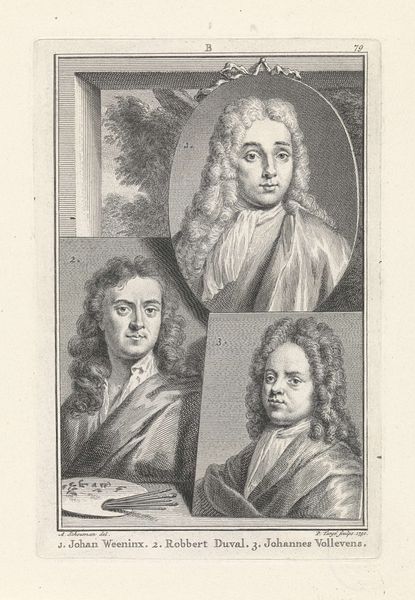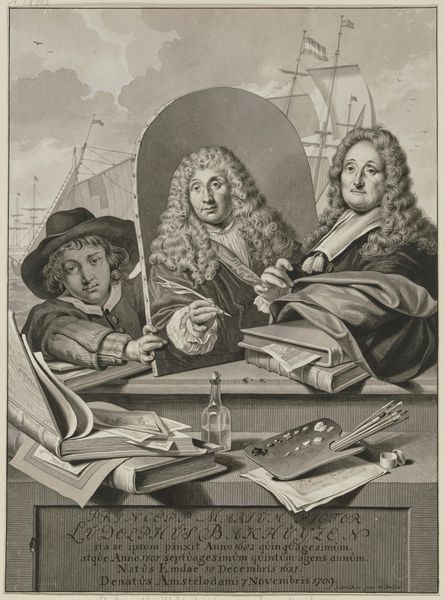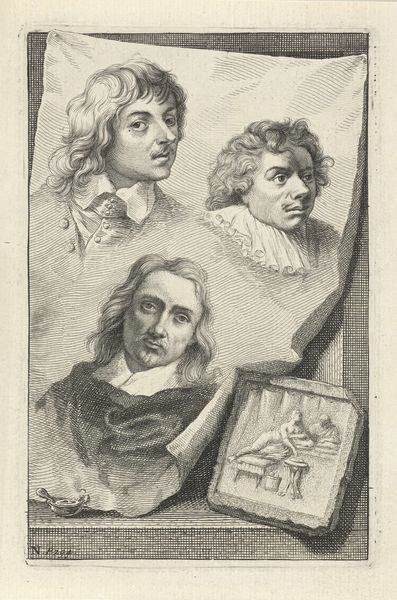
Portretten van Hendrik van Limborch, Coenraet Roepel en Gerhard Jan Palthe 1750
0:00
0:00
pietertanje
Rijksmuseum
engraving
#
portrait
#
baroque
#
dutch-golden-age
#
old engraving style
#
caricature
#
engraving
Dimensions: height 160 mm, width 106 mm
Copyright: Rijks Museum: Open Domain
Curator: Here we have an engraving from around 1750 by Pieter Tanjé titled "Portretten van Hendrik van Limborch, Coenraet Roepel en Gerhard Jan Palthe." Editor: It’s striking how three portraits can feel so unified. The arrangement feels formal, yet those powdered wigs are begging for a little satire! Curator: Considering Tanjé’s role as an engraver, I’m interested in his process. Note the clear distinction in texture achieved through varying line work. See how he contrasts smooth skin with the intricate curls of hair. How do such graphic techniques influence accessibility, consumption, and the perception of value associated with paintings versus engravings? Editor: Absolutely. It's vital to understand these figures not as isolated individuals but as participating in, and reflecting, broader social narratives. Tanjé here presents a particular image of elite masculinity, linked to professional artistic labor and perhaps even wealth and privilege in 18th century Dutch society. How does this curated presentation, designed for public consumption, influence viewers' understanding and expectations? Curator: Thinking materially, engravings like this democratized access. They turned painting into a commodity available beyond the wealthy. The act of replication transforms the very essence of artistic production; it moves away from a single auratic object. Editor: And what’s significant about rendering three painters? Is this also about preserving a visual history? To your point about commodity, engravings become historical documentation that also perpetuates the art market—and the artistic legacy itself. Who gets remembered, and how? And do you think it reproduces the canon, even reinforcing it for a different type of collector or public? Curator: A powerful observation. Also the very process involved the work of specialized workshops; dividing the artistic labor itself becomes interesting to study. Editor: So the focus shifts from the romanticized artist to these collective endeavors that enabled and popularized portraiture, thus revealing inherent power structures. It’s also about claiming their own identities, reflecting their participation in broader movements of Enlightenment and asserting a Dutch identity on their own terms. Curator: Precisely, each delicate line holds a larger discourse on class, production, and artistic accessibility. It has shifted how I initially considered the image’s aesthetic appeal. Editor: For me, it underlines the critical examination needed to truly understand artwork from its historical creation to the ongoing cultural impacts.
Comments
No comments
Be the first to comment and join the conversation on the ultimate creative platform.
